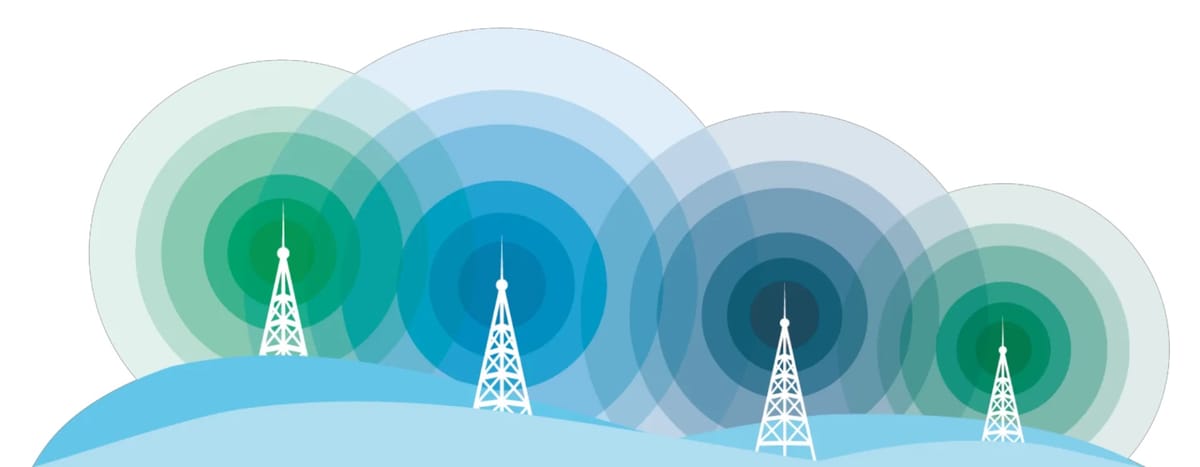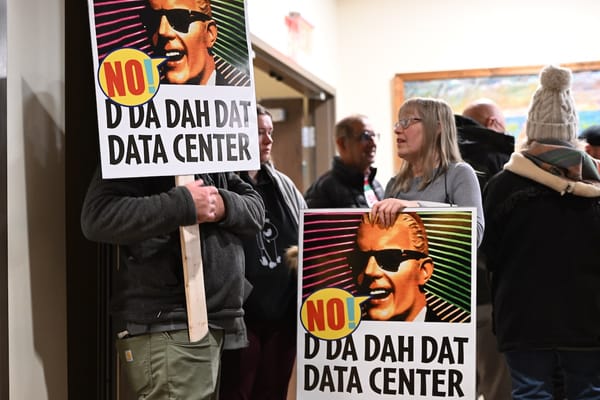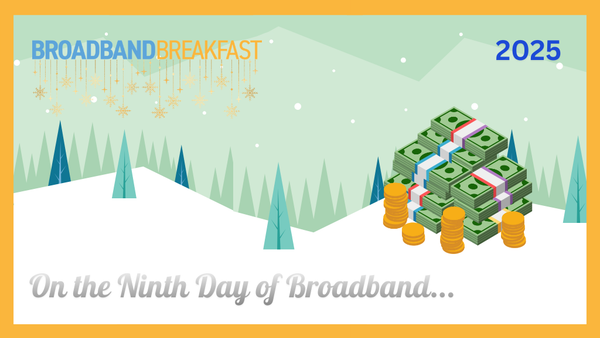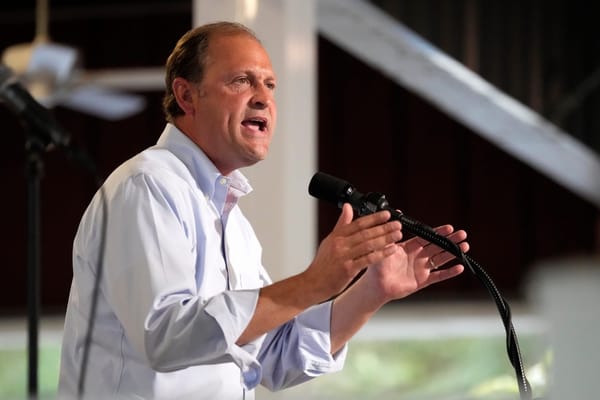Explainer: Is Spectrum Sharing a Key to Broader Connectivity Goals?
In the second in a series of explainers, Broadband Breakfast looks at the quickly emerging topic of spectrum sharing, as 5G ramps up against the finite resource.
Broadband Breakfast

May 18, 2021—In February of this year, the Federal Communications Commission’s Acting Chairwoman Jessica Rosenworcel announced her support for spectrum sharing, the process by which carriers must share their spectrum with newer operators.
Viewed broadly, the move signaled another shift in a new-look administration: Like the exploration of a possible reintroduction of net neutrality laws we covered in our first explainer, spectrum sharing doesn’t always sit well with the larger carriers.
- Broadband Breakfast Explainer 1 (Net Neutrality): On the Cusp of Sea Change, Broadband Breakfast Examines the Net Neutrality Debate
- Broadband Breakfast Explainer 2 (Spectrum): Is Spectrum Sharing a Key to Broader Connectivity Goals?
- Broadband Breakfast Explainer 3 (Section 230): With Florida Social Media Law, Section 230 Now Positioned In Legal Spotlight
- Broadband Breakfast Explainer 4 (Antitrust): Antitrust Heats Up as Biden Selects Tech Critic Jonathan Kanter for Top Enforcement Spot
That’s because the major wireless carriers, including AT&T and Verizon, prefer to have exclusive rights to the use of radio-frequency spectrum.
Spectrum sharing has picked up steam in the industry, with announcements about a sharing model for the 3.5 GHz Citizens Broadband Radio Service and others coming down the pipe. And it’s generating a lot of attention because the new-look FCC sees it as a critical inflection point in the deployment of broadband: by sharing spectrum, more carriers can offer more services, thereby increasing coverage, competition and driving down prices for Americans.
Join the Broadband Breakfast Live Online event, “Spectrum for 5G, LEOs and the Future of the 12 GigaHertz (GHz) Band,” on Wednesday, July 14, 2021. You can also PARTICIPATE in the current Broadband Breakfast Live Online event. REGISTER HERE.
What do radio waves do and why are they regulated?
The electromagnetic spectrum represents the full range of electromagnetic radiation. The spectrum runs from the very short gamma waves, to X-rays, to ultraviolet light, to visible light, to infrared, to the much longer radio waves.
The time it takes for a wave to change direction in a second is called frequency, which is measured in Hertz (Hz); one Hz is equal one wave cycle per second. The comparative lowest frequency waves are known as radio waves, which are what the telcos really care about.
Audio and visual data can be carried on radio waves, which can be sent and received over devices like televisions, radios, and cellphones.
But because there is only so much spectrum, different regions of spectrum—known as bands—would become crowded and dysfunctional if there was no coordinating mechanism for regulating use. This can come in the form of regulations from the FCC or from a form of quasi-property rights in the airwaves.
Certain bands are licensed for exclusive use. Other bands have been designated for users to operate without licenses. Both of these approaches have distinctive rules designed to address the unique obstacles each presents.
The history of regulating airwaves and licensing
To address the issues of spectrum licensing and other related matters, the United States government created the FCC through the Communications Act of 1934. A previous version of the agency, the Federal Radio Commission was created in 1927 and operated out of the Department of Commerce under then-Secretary (and later President) Herbert Hoover.
Nowadays, the FCC primarily regulates non-federal spectrum. The National Telecommunications and Information Administration of the Commerce Department regulates federal government and U.S. military use of spectrum.
The term “licensed spectrum” refers to bands of radio frequencies that have been designated by the FCC as areas that require credentials to operate in. Licensed spectrum is considered by many to be prime real estate—though it is expensive, there is often less interference than unlicensed spectrum, where operators do not require credentials, and is open to amateur use.
The primary bands of unlicensed spectrum in the U.S. are the 902-928 MegaHertz (MHz) band, the 2.4 GigaHertz (GHz) band (or 2400-2500 MHz), the 5.8 GHz band (5725-5875 MHz), and the 24-24.25 GHz band.
Spectrum tiers and sharing momentum
So far, the FCC has allocated bands between 9 KiloHertz and 275 GHz. For many, the answer to a limit in spectrum is a model known as “spectrum sharing.” This practice allows for multiple operators to inhabit the same band of spectrum.
One well-known band in the U.S. that uses this model is the Citizens Broadband Radio Service (3550-3700 MHz). Rather than license this band of spectrum, users operate in a series of three tiers that denote levels of priority.
Those at the bottom of the list have what is referred to as “general authorized access.” These users have free access to the CBRS band, but also limited priority.
Above these users are operators with the “Priority Designation.” These operators pay for a higher status than general authorized access, but even they must yield to the top priority users. These users have what is referred to as “incumbent access.”
Watch our 2:48 preview video on radio frequency spectrum
Incumbent access is reserved for significant users who have operated within the band the longest or have crucial government or societal roles. For the CBRS band, this is the United States Navy, which uses the band for their underwater radar operations. Users that operate in the same areas of the band as the Navy can still use it, but they must yield to all naval operations.
Similarly, those with general authorized access must yield to those with priority designation. Licensing and sharing are not mutually exclusive; a band of spectrum can be both licensed and shared, as is the case with the CBRS band.
Though many large telcos are opposed to spectrum sharing, Dish Network is a notable exception. In May of 2021, the company came out in favor of the spectrum sharing model proposed for the 12 GHz band (12.2-12.7 GHz).
The FCC’s Acting Chairwoman Jessica Rosenworcel is a notable proponent of spectrum sharing. She has openly advocated for spectrum sharing as a solution to the U.S.’ need for more spectrum as its appetite for 5G increases.
Rosenworcel specifically expressed her support for spectrum sharing in the 3450-3500 MHz band; she would see that auctions for this band begin as early as October 2021.
Under Rosenworcel’s leadership, the FCC also greenlit the deployment of equipment designed to facilitate spectrum sharing, to Guam, American Samoa, and Puerto Rico.
The Dept. of Defense is also supportive of various spectrum sharing initiatives.
Opponents of spectrum sharing
Of course, shared spectrum also has opponents. Critics of spectrum sharing argue that operator cohabitation diminishes the value of specific bands and leads to inferior service. Many of these critics instead favor what is known as a “flexible exclusive use” model.
The “flexible” component refers to the U.S. practice that specific bands do not have to be used for specific services. For example, one band may be used for cellular service or satellite service. Though different bands may be better suited for different services, they are not required to be used in a specific way. This is not widely practiced around the world, and is somewhat unique to the U.S.
The “exclusive” part distinguishes the model from “shared” spectrum; one band is designated and licensed to one operator, for their use only—they are not required to yield access to any incumbent providers.
Join the Broadband Breakfast Live Online “Ask Us About Radio Frequency Spectrum” on Wednesday, May 19, 2021. You can also PARTICIPATE in the current Broadband Breakfast Live Online event. REGISTER HERE.










Member discussion